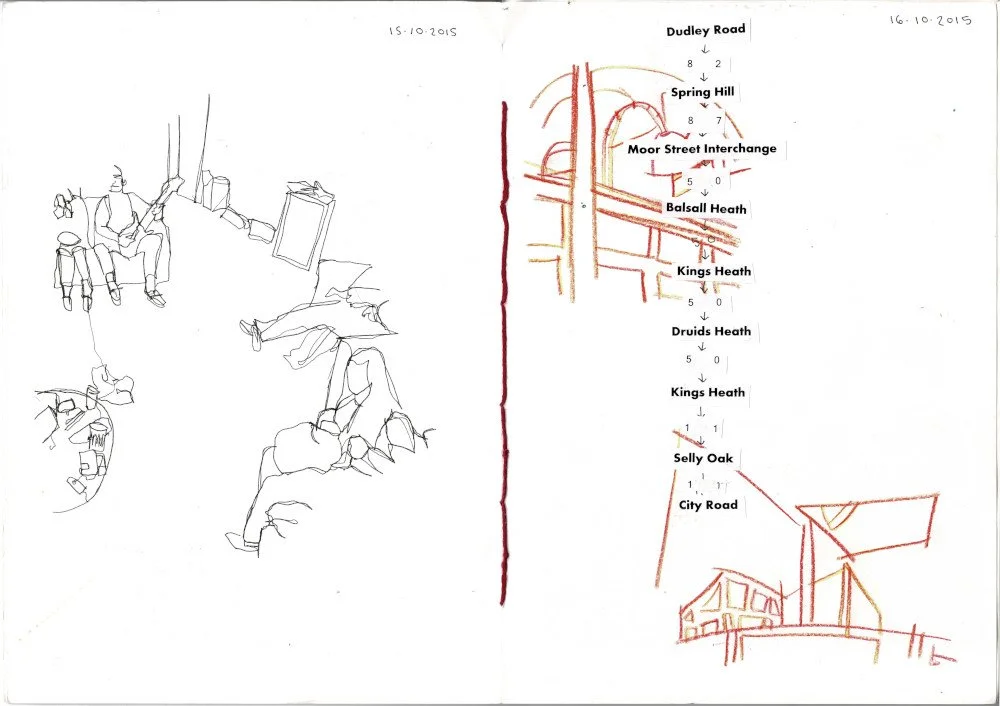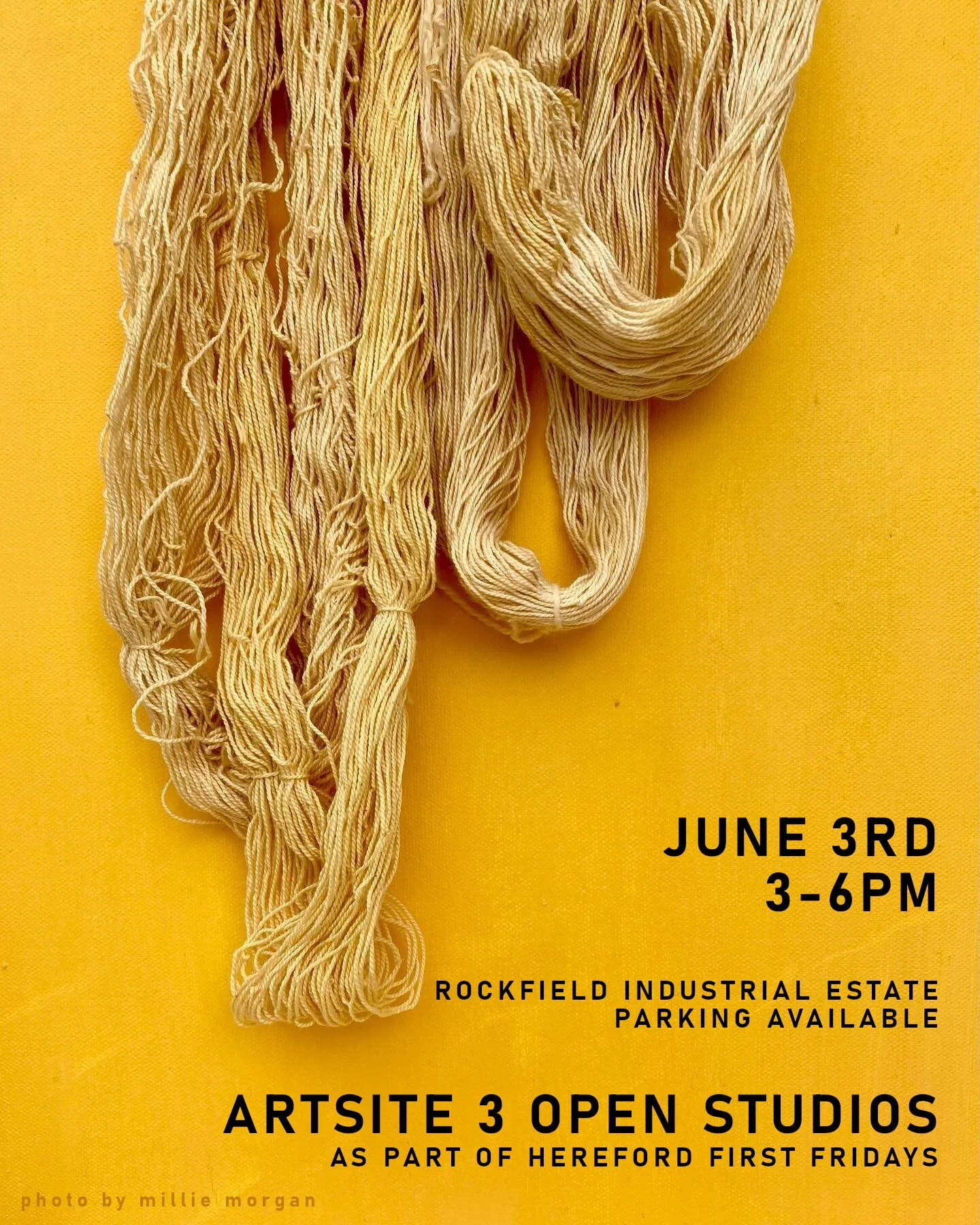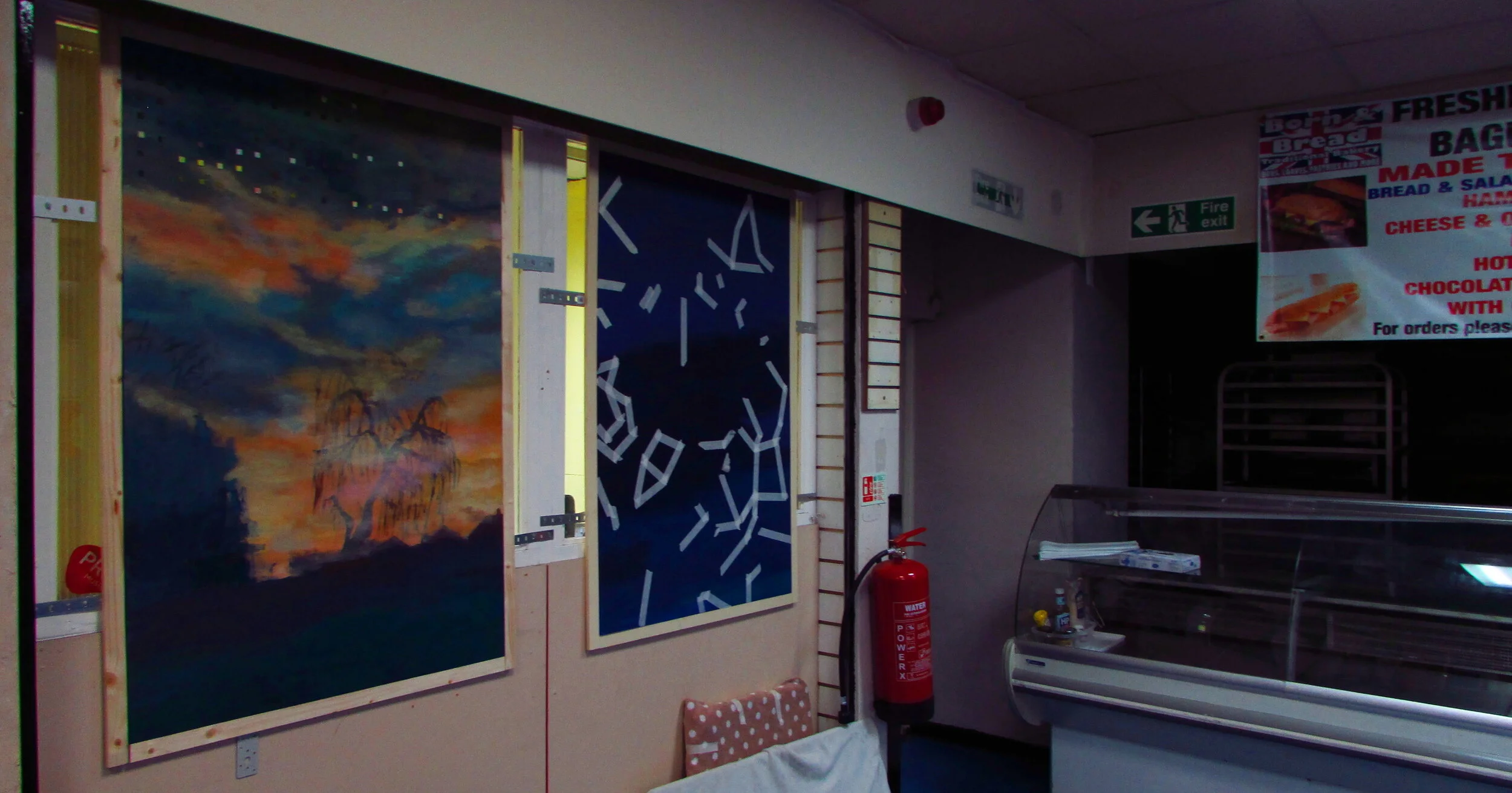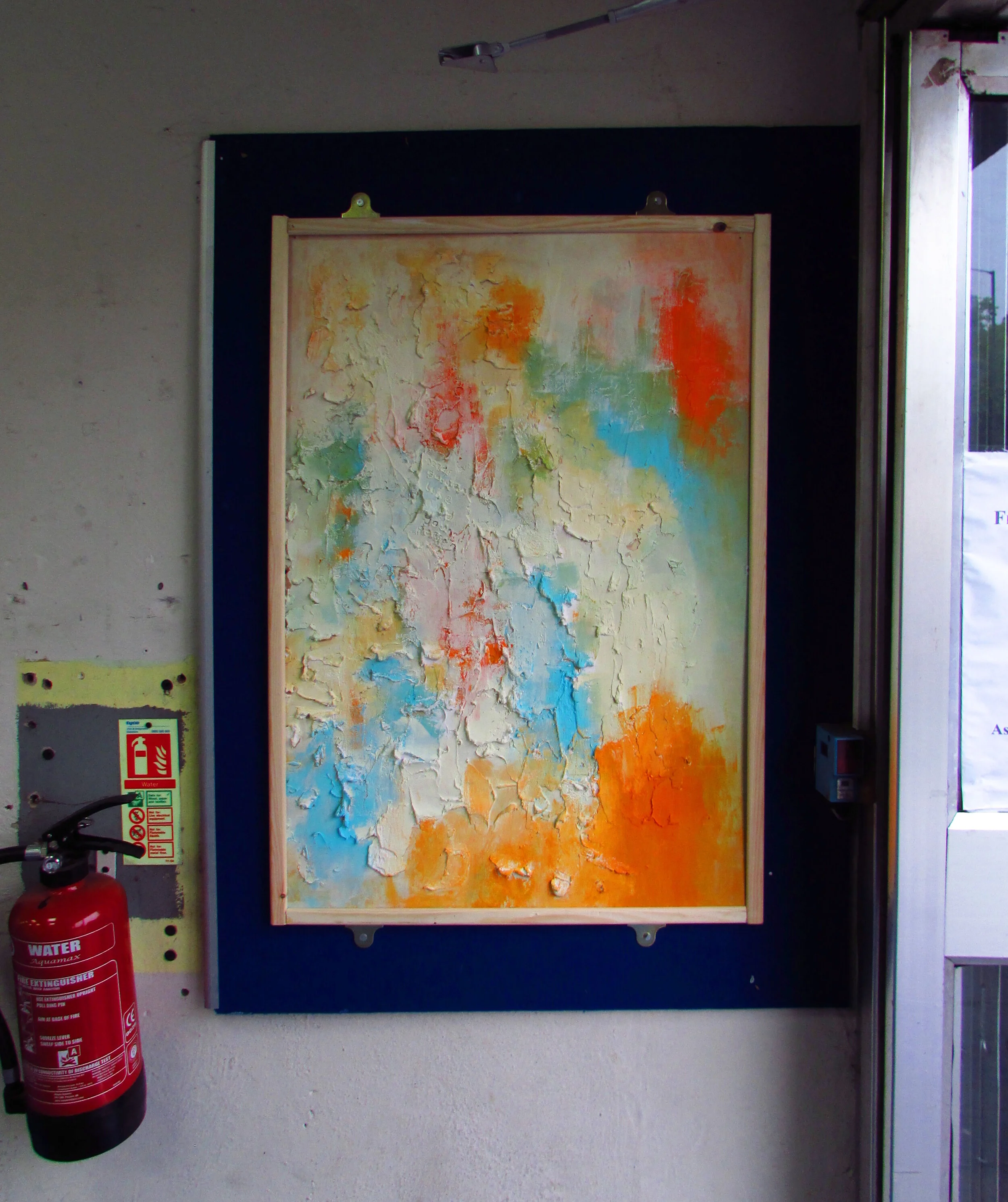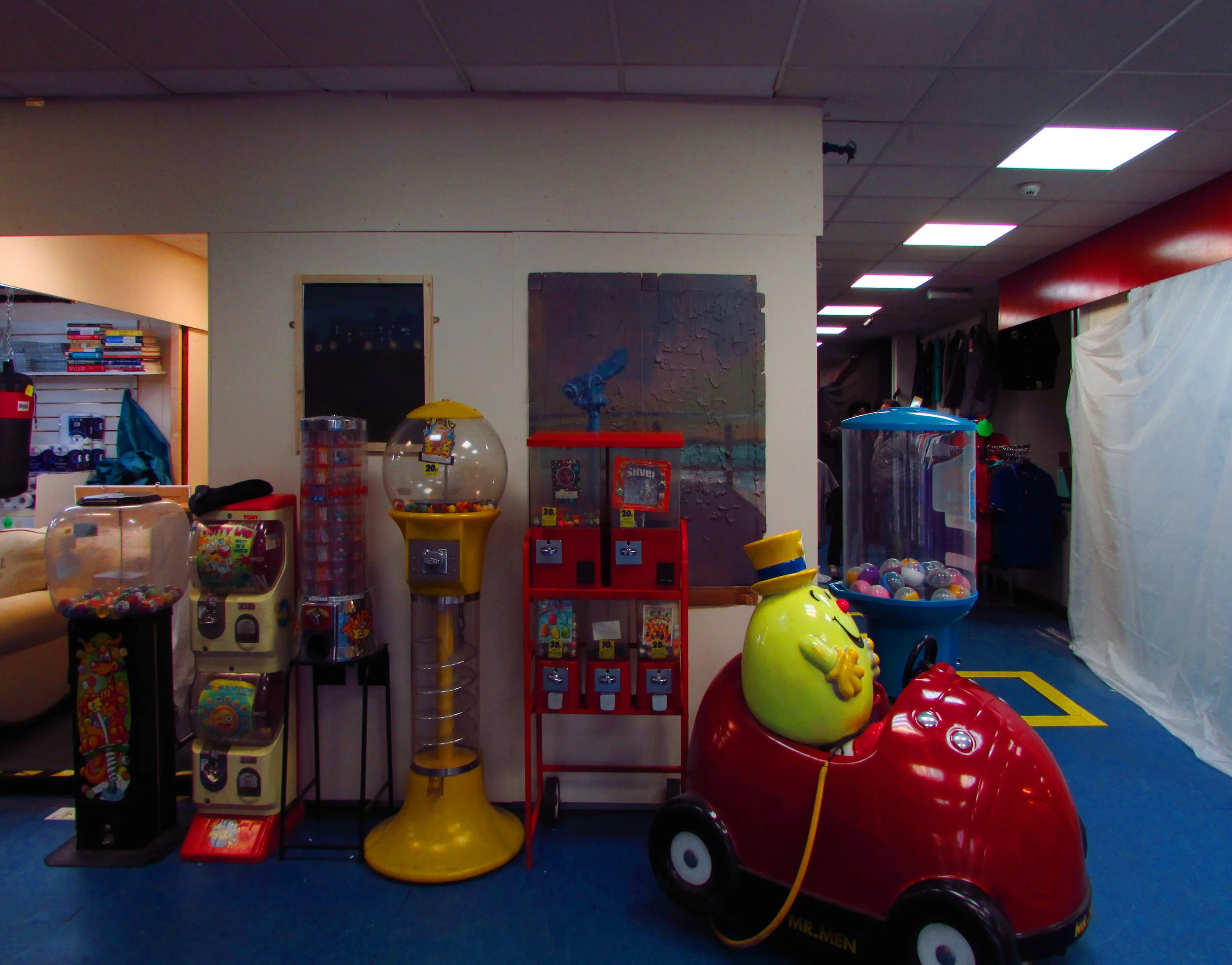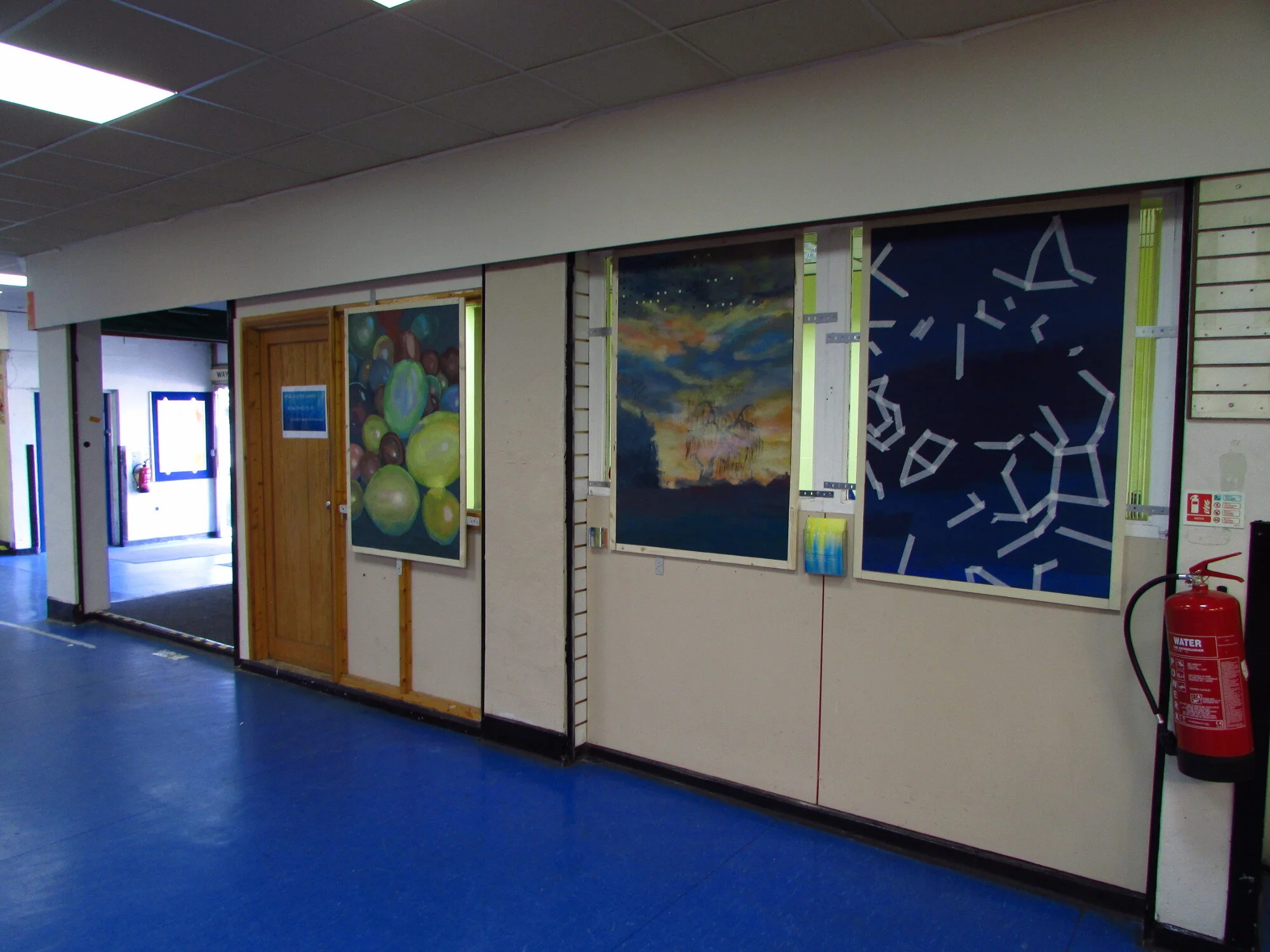Recently I had cause to revisit this journal I created as an illustration student in 2015.
To create this book, I used A4 150gsm paper. The size of the book is A5 and it is bound using the coptic binding method.
Bookbinding was a key focus of the module I created this journal for, so I elected to make the binding as visible as possible. I selected a red thread to tie in with the wider colour scheme of the book – although the stylistic decisions seemed haphazard, they leaned in certain directions and the binding of the book was key to framing this. I did not attach a cover to obscure the binding.
Beyond these technical aspects, the creation of the book relied on collage, with a collection of papers and pigments. Illustration naturally plays a key role, but photography, text, and found items are interwoven with this.
The book is now 8 years old, and already some pages fair better than others. Throughout my art career I have worked with a lot of unstable and destructive materials, but interestingly their appearance in this journal is moderated, and usefully the worst are mostly restricted to specific spreads.
The main issue over the longer term is the reliance on digitally printed material, which accounts for a good portion of the material in the book. Due to using the methodology of collage, these came into the project as second-hand materials rather than created specifically with artistic intention, and are likely to be dye ink on acidic paper.
Journals, sketchbooks, diaries etc are a difficult subject. It is often difficult for the author to determine what their function is supposed to be. I am motivated in the moment by self expression and a desire to vent, only to find this is contraindicative with a desire to leave a record to be read over at a later date, which requires an acknowledgement of an audience and the editing and self-moderation that comes with it.
What is interesting about this journal is that it’s the last series of records about my life I created before I became a stalking victim, which was an experience that had profound and lasting effects on my judgement calls when recording or drawing attention to what I pay attention to day to day.
These pages are dated 2015; it was 2021, six years later, when I finally came to terms with the lasting impact this experience was having on my ability to create art. My practice felt hollow as I continually disengaged from what had originally been its core driving force - a wish to earnestly communicate my internal experiences with an external audience. I desperately sought privacy wherever I could find it. I didn’t want the audience. I was trapped in a stalemate.
The motivation behind my practice had to shift, and I became more interested in the materials I was using. I explored ideas of tradition, longevity, and quality, leading me primarily into an oil painting practice but also supporting my ability to produce prints.
Focusing on the materials was a sincere activity while simultaneously being a diversion tactic. It took the pressure off the image and what I was attempting to communicate, allowing me the space to construct an image that did not have much to say. Alternatively, it allowed me to create an image like normal and distract the viewer away from any observations I did not want to handle, by discussing the physical components rather than the visual effect.
With the pressure to leave myself exposed to an audience gone, I could shut down and restart being an artist from scratch. Eventually the desire to record and communicate naturally developed, the same as it had the first time around.
Creating another journal like this, as in physically creating and binding it myself, is my route back to where I was in 2015. I can focus on the materials and technical elements, forming a sense of community with all the people over hundreds of years who have performed the same craft. The contents of the journal are in addition to the physical construction of the journal itself, rather than having to do the heavy lifting on their own.
For all the talk of having an audience and being seen, what I like about the 2015 journal is that it doesn’t need one. This book feels comfortable tucked away in a box in a storage unit where the contents of a generic sketchbook need a further purpose.
